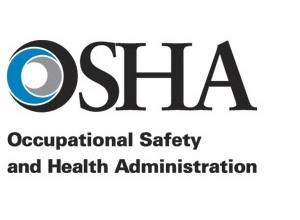How OSHA Calculates Penalties
Reading Time: 5 minutes
When OSHA issues a citation to employers for a workplace safety violation, the citation lists a proposed penalty. Much like a speeding ticket, the employer is not required to pay the penalty immediately and can contest the citation on a number of grounds. The decision to pay the citation or contest it is a cost-benefit analysis decision. It ultimately may be less expensive to pay a citation than to engage with OSHA. In undertaking the decision, the employer should understand whether the penalty is appropriate and not likely to be reduced, or if the penalty is improperly calculated and worth fighting. Therefore, here are key things it is important to know about how OSHA calculates penalties.
OSHA’s Authority To Issue Penalties
The Occupational Health and Safety Act (“Act”), which creates OSHA, gives OSHA the authority to issue to civil penalties. 29 U.S.C. § 666(j). The amounts of the penalties increase with inflation and the maximum allowable, as of January 2018, is $129,336.00. 29 CFR § 1903.15.
Assessment Of Penalties
The OSHA area director who signs off on the citation is charged with assessing penalties based on the following four factors:
- Gravity of the violation;
- Size of the employer;
- Good faith of the employer;
- History of violations
These factors make intuitive sense. After all, a large employer will feel less pain from citation for $10,000.00 than an employer who only has a few employers. A repeat offender should be penalized more harshly than an employer who made an unknowing error.
Given the subjective nature of these factors, employers of the same size, with the same history, committing the same violations in different parts of the country could be assessed different penalties, based solely on the area director issuing the citation.
To standardize the amount of the proposed penalties, OSHA publishes a Field Operations Manual (“FOM”). The 2016 version of the FOM may be found here.
First Calculation: Gravity of Violation
Area directors are instructed to first look at the “gravity” of the violation when determining a penalty. “Gravity” as defined by the FOM as the severity of injury that could result from the alleged violation combined with the probability that an injury will occur. For instances, it is more likely that an employee would fall from a steep sloped roof versus a flat roof, and more likely that they would be injured from a height of three stories versus one story. The FOM also breaks down levels of severity into four tiers, starting at “minimal” to “high” (death or permanent disability). Probability is assessed by analyzing factors like the number of workers exposed to the condition, the proximity to the hazard, and the employee’s use of safety equipment, among other factors.
Once the severity of potential injury is determined it is combined with the probability to calculate the “Gravity Based Penalty” or “GBP” value. The FOM contains tables which assign penalties based on GBP values, thus bringing some objectivity to a subjective interpretation.
Second Calculation: Repeat or Willful Violations
The intent of the Act is to ensure workplace safety. Employers who knowingly flaunt the rules or have been repeatedly instructed to correct their practices are to be charged higher penalties than employers who unknowingly committed violations or had not previously been instructed to correct the same.
Repeat violators may have their initial GBP penalty multiplied up to ten times. Willful violators likewise may have their penalty increased beyond the initial GBP.
As mentioned in our prior article, the employer should understand that failing to contest the citation and paying the penalty can have negative repercussions, as this may count towards being classified as a “repeat” offender going forward. Even if the circumstances surrounding a prior citation were dubious, an employer who rolled over on contesting the citation may be limited in appealing for a reduction based on a repeated safety violation.
Third Calculation: Size
The size of the employer can reduce the GBP penalty. Employers with ten or fewer employers may be eligible for a seventy percent reduction; employers with twenty-five or fewer employees may receive a seventy percent reduction; employers with fewer than one hundred employees may receive a thirty percent reduction; employers with fewer than two hundred and fifty employees may receive a ten percent reduction.
Fourth Calculation: Good Faith
As recommended in our earlier article, if a violation is discovered, immediate action should be taken to correct the hazard. Not only with this help with any OSHA proceeding, but will help the employer avoid any potential injury that could lead to a worker’s compensation claim or negligence action.
Good faith reductions are not allowed in situations with willful or repeated violations, per the FOM.
However, in the case of a first time citation, the GBP may be reduced from fifteen to twenty five percent based on the employers implementation of workplace safety training, controlling hazards, or meeting with employees to discuss workplace safety.
Conclusion On How OSHA Calculates Penalties
OSHA penalties have a wide range of dollar amounts, based on a myriad of factors. In determining whether to contest a citation or to correct the safety issue and pay the citation, the employer should conduct an analysis as to whether the penalty is appropriate under the circumstances. In understanding how OSHA calculates the citation, the employer may be able to negotiate a lower penalty.
For more information on the procedure to contest an OSHA citation please be sure to read https://www.jimersonfirm.com/blog/2016/03/an-overview-of-contesting-osha-violations/


